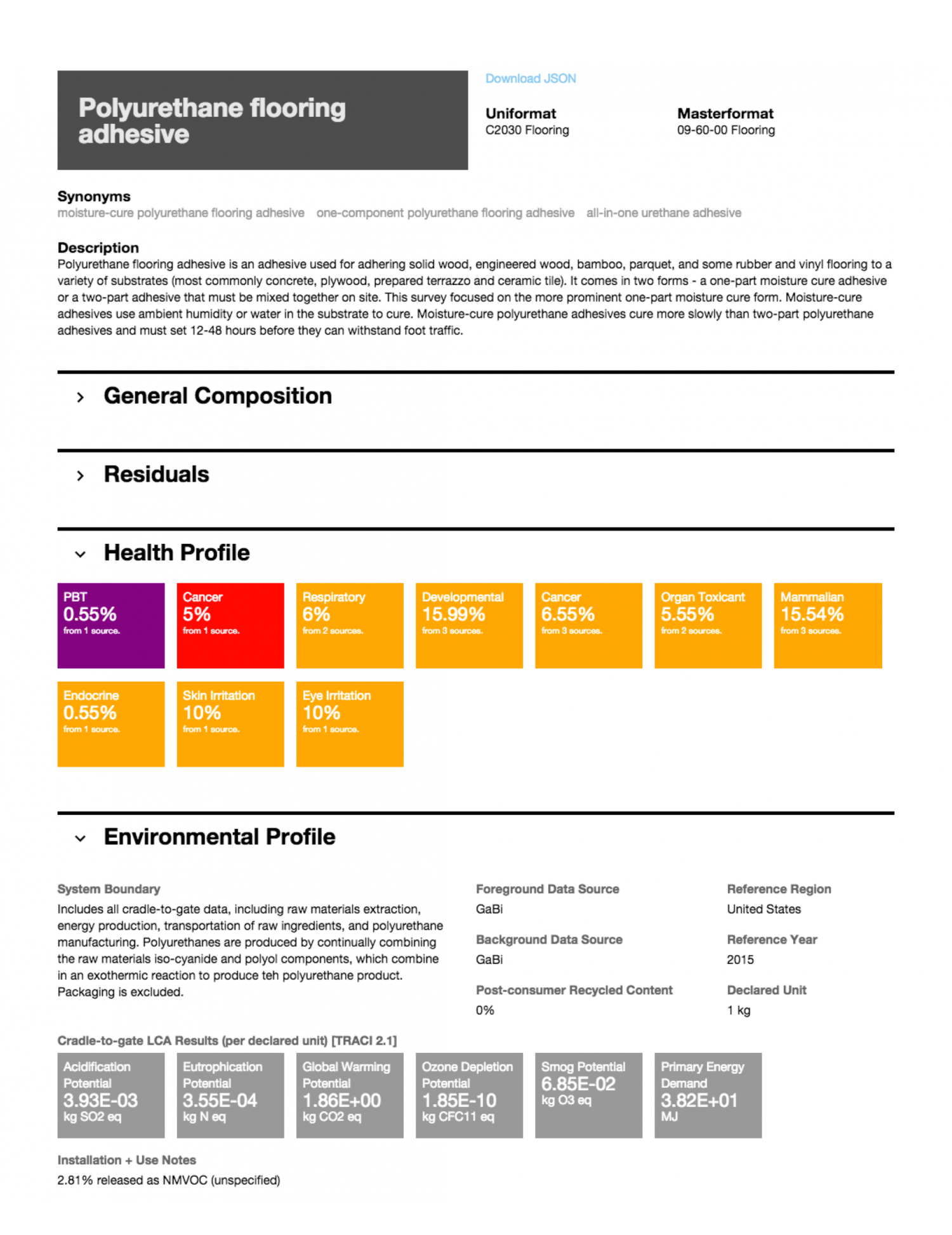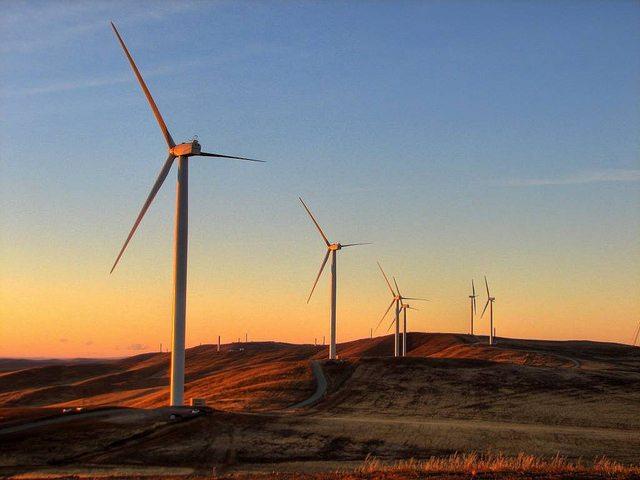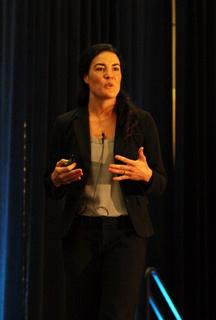Teachers call for climate change to be taught to under 11s


New research has shown that over 90% of primary school teachers in England believe they should be teaching children about the effects of climate change, despite sustainability no longer being a statutory requirement in the curriculum.
The study - commissioned as part of Bristol’s year as the UK’s first European Green Capital - found that over half (51%) of those surveyed felt it should be a high priority in primary school education, regardless of the national curriculum. However, over three quarters (76%) say they do not have the right resources to teach sustainability in the classroom.
In response Bristol 2015, the organisation set up to facilitate Bristol’s year as European Green Capital, is launching a new UK-wide education resource, designed to put sustainability back on the education agenda. Nearly all primary school teachers surveyed (96 per cent) said they would use a dedicated resource that enabled them to teach sustainability while covering multiple curriculum objectives.
The national schools programme will be shared with delegates at the UN Climate Change Conference (COP21) in Paris next month.
FDA Asks For Consumer Comments On "Natural" Food Labeling


The term “natural” on a product label can be very misleading. Some food and beverages labeled “natural” can contain unnatural ingredients such as high fructose corn syrup, which a Center for Science in the Public Interest (CSPI) report describes “made through a complex chemical industrial process.”
The U.S. Food and Drug Administration (FDA) announced this month that will start taking public comments on the use of the term “natural” on food labeling starting November 12 and lasting through February 10, 2016. The FDA lists several reasons why it is taking comments on the use of the term “natural,” including the “changing landscape of food ingredients and production.” The other reasons include responding directly to consumers’ requests that the FDA look into the use of the term, and class action lawsuits against companies using the term “natural.”
There have been numerous class action lawsuits against companies using the term “natural” on their food labeling including one against Walmart for its “Great Value All Natural Cornstarch.” The lawsuit claimed that the cornstarch’s labeling as “natural was false and deceptive because it led consumers to think that the product really was “all natural” when it actually contained GMOs. Both parties in the lawsuit agreed to a settlement.
Part of the problem with the use of the term “natural” is that the FDA lacks a definition. However, it describes the term natural as meaning that “nothing artificial or synthetic (including all color additives regardless of source) has been included in, or has been added to, a food that would not normally be expected to be in that food.” But the federal agency’s policy doesn’t address food processing and manufacturing methods nor does it address whether a food item labeled natural can include health benefits.
However, the FDA does acknowledge on its website that it’s difficult to define a product labeled natural from a food science perspective “because the food has probably been processed and is no longer the product of the earth." Although the federal agency has a description of the term natural, it lacks an actual definition. “The agency has not objected to the use of the term if the food does not contain added color, artificial flavors, or synthetic substances.”
The U.S. Department of Agriculture (USDA) does have a definition of the term “natural” and it is “a product containing no artificial ingredient or added color and is only minimally processed.” It defines minimal processing as meaning “that the product was processed in a manner that does not fundamentally alter the product.” That definition rules out products with high fructose corn syrup and citric acid. The CSPI report found that in 1992 the FDA sent a warning letter about All Natural Snapple Tea because it contains citric acid which is not considered natural under FDA policy. However, the company today appears “to have ignored or are not aware of that warning,” according to CSPI.
The “natural” food market is growing. From just 2007 to 2008 the market for “natural” foods in the U.S. grew by 10 percent, and the second-most common label on new products was “all natural” in new food products launched in 2008, the CSPI report noted. The report had several recommendations for both the FDA and the USDA. The report recommended that the FDA prohibit use of the term natural on products that contain high fructose corn syrup, and restrict the use of the term natural to foods that don’t contain artificial ingredients and are minimally processed. It recommended that the USDA determine that high fructose corn syrup is not a natural ingredient and that products that contain it can’t be labeled as natural.
The big problem with the label “natural” is that consumer may think the product is more nutritious or has more health benefits. In 2014, Consumer Reports conducted a survey that found almost 60 percent of those polled look for the term “natural” when they buy food. About two-thirds of those polled thought it meant a processed food contains no artificial ingredients, pesticides, or GMOs.
Image credit Blue Bunny, Flickr
Climate and Prosperity: Two Roads Converge in Paris


Next week delegates. ministers, heads-of-state and civil socity meet in Paris at COP21 in hopes of striking an international commitment limiting global warming to 2 degrees Celsius from pre-industrial levels.
Data recently released from the MET Office in the U.K. projects average global surface temperatures in 2015 are set to reach the threshold of 1 degree Celsius, halfway to the limit of “acceptable” climate change. This temperature change emphasizes the urgency of the task at hand. With additional warming already baked into the system the risk, challenge and opportunity of our present moment could not be more sharply defined.
If we are to meet with any measure of success in Paris, we must realize that global warming does not exist in a vacuum, metaphorically speaking. It is a manifestation of the larger picture of sustainable human development. For far too long the challenges of global prosperity, sustainable development and climate change have shared a common ambition for a better world, but lacked a sense of context, at least in terms of a cohesive strategy aimed at integrated goals and solutions.
“Over the years we’ve managed to speak to them in silos,” special UN Advisor Amina Mohammed told TriplePundit in a recent interview, “and now we really do need to come back to that convergence of how one matters to the other.”
There is no sustainable human prosperity without addressing climate change, there is no hope of containing climate change without insuring human prosperity. This is the year that the two roads meet.
Sustainable Development Goals: Uniting a vision for a better world
Economist Jeffrey Sachs, Director of the Earth Institute at Columbia University, speaks to this integration of ambition toward sustainable global prosperity and how "this year is a unique opportunity for our generation to set clear goals and clear pathways to a safer, more prosperous world."
"Governments have to achieve a new vision," said Sachs in an interview earlier this year. "That is the vision of sustainable development, which means combining economic development, social inclusion, and environmental sustainability. That's the path that can keep us safe, that can be a path to fairness in the world and a path to prosperity."In September the United Nations adopted 17 Sustainable Development Goals (SDG) building on the Millennium Development Goals set in place in 2000 and expiring this year. Many of the targets embedded within the Sustainable Development Goal framework reflect the interconnection between climate action and human prosperity:
Goal 13: Take urgent action to combat climate change and its impacts
A key component of integrating sustainable development with climate action, SDG 13 addresses mitigation, adaptation, resilience, education and climate finance, linking the aims of the post-2015 development agenda with the UN Framework Convention on Climate Change (UNFCC) as the "primary international, intergovernmental forum for negotiating the global response to climate change."
Goal 7: Ensure access to affordable, reliable, sustainable and modern energy for all
The goal calls for universal access to modern energy sources, doubling energy efficiency (perhaps the most effective means of meeting climate targets in the short term), building infrastructure and substantially expanding the share of renewable energy in the global energy mix.
Clean energy development throughout the developed and developing world is essential for continued economic development, prosperity, and, obviously, climate action. SDG 13 will cannot be implemented without SDG7.
"A lot of what we have to talk about in the new (post-2015 development) agenda has got to do with infrastructure," Ms. Mohammed says. "We're very concerned about how we tackle climate change. We want to see people green the way they do business."
SDG 9 supports infrastructure upgrade and retrofit, technology development and financial support for developing countries to sustainably scale-up industrialization and employment. "The financing that we had in place successfully before adoption of the SDGs helps provide for renewable energy and infrastructure,"
Goal 11: Make cities and human settlements inclusive, safe, resilient, and sustainable
Humanity is an urban species, with more than half of all people now living in cities. By 2050 an estimated 6.5 billion people with live in urban areas - two-thirds of humanity. The rapid migration into cities often brings with it concentrated pockets of extreme poverty, pollution and unrestrained development.
Ensuring basic human services such as access to clean water and affordable housing are obviously imperative to human well-being. Beyond that, sustainable urban development in both the developed and developing world will drive change toward clean energy development, climate resilience, energy efficiency and emissions reductions.
Goal 12: Ensure sustainable consumption and production patterns
The Great Acceleration of the mid-20th century, when resources seemed inexhaustible and expendable, is over. All nations must incorporate responsible, rational patterns of production, consumption and waste generation. But the developed world must take the lead.
"How do we deal with lifestyles?" asks Ms. Mohammed, whose home country is Nigeria. "When we talk about countries, I'll tell you that our carbon footprint is of little significance. But if we go the way we intend in terms of growing our economy, then we're going to be a major emitter. We have to take precautions now and we need the partnership, the technology to do that."
Only through sustainable consumption and production patterns will climate change be tackled, and only through international partnerships and an honest assessment of lifestyles will endless consumption equate to prosperity - and in the end, human happiness.
Goal 14: Conserve and sustainably use the oceans, seas and marine resources for sustainable development
The oceans drive our weather patterns, feed millions and are home to much of the life on Earth. Ocean warming, acidification, pollution and over-exploitation are a direct threat to habitability of the planet.
SDG 14 calls for urgent action to minimize acidification, preserve and protect ocean fisheries, clean up the mess and reduce future pollution. Again, the health of the ocean is inextricably linked to climate. We will not have healthy oceans without a stabilized climate.
Climate change has already adversely impacted forests all over the world. Plant and animal species are migrating, and when they can no longer adapt to a changing climate, they are go extinct. Human prosperity and every economic system on Earth depends on healthy ecosystems. SDG 15 addresses the conservation, restoration and sustainable use of terrestrial ecosystems; wetlands, freshwater systems, mountains and drylands.
COP21: The end of the beginning
The history of the COP process stretches back decades, to the first Rio Earth Summit in 1992 establishing the UN Framework Convention on Climate Change (UNFCCC), adoption of the Kyoto Protocol at COP3 in 1997 (and put in force, absent the United States, in 2005), the heartache that was COP15, and the struggle to recover in the years since in hopes of finally reaching a framework beyond the Kyoto Protocol that is fair, equitable and effective.For its flaws, and there are many, with the Kyoto Protocol and COP process, it has arguably served us well, even if only by learning from its shortcomings. Many of the roadblocks that hobbled COP15 remain, most notably climate finance and coming to terms with the idea of "common but differentiated responsibility." But now we have a chance to learn from those mistakes and overcome the obstacles in our path.
“The Kyoto Protocol was a remarkable achievement in many ways," UNFCC secretary-general Christiana Figueres said earlier this year to mark the 10th anniversary of the Kyoto Protocol "It not only underscored the scientific reality that greenhouse gas emissions need to fall. But it also put in place pioneering concepts, flexible options, practical solutions and procedures for accountability that we often take for granted today."
“Paris will not solve climate change at a pen stroke," Figueres added, "But similarly it must trigger a world-wide over-achievement and a clear sense of direction that can restore the natural balance of emissions on planet Earth.”
In other words COP21 will not be a conclusion, we will not go home on December 12 thinking "well, now we've taken care of climate change." But we can know that real change is set in motion - that it is, at last, the end of the beginning.
The arc of history, the climate of prosperity
Each generation places history in the context of events; no generation is without its place in history. The “greatest generation” of my father endured the ravages of world war, witnessed the birth of the atomic age and, in its aftermath, the genesis of the United Nations.With Europe in ruins and two Japanese cities flattened by the splitting of a single atom, the world was thrust onto a new path. The decline of colonialism, the shadow of Mutual Assured Destruction in a cold war that defined my childhood and an economic boom led by the U.S. set the stage for the most rapid upending of human society in history.
What does this mean for us 70 years on? The arc of history reaches beyond any one generation or sliver of time. Progress is the fluid culmination of human endeavor, punctuated by periods of seemingly unprecedented advances (and setbacks). It is the steady commitment to a vision for a better world, maintained in times of trial and disappointment, that leads to breakthroughs of human spirit and understanding. Like an earthquake, the pent up energy for change slowly grinds away until resistance gives way and the world pushes forward.
We now live on the precipice of change. A confluence of events forged over decades and generations marking an opportunity to either meet the challenges of the modern world, or fail, falling back into fear and distrust. in any case, it will surely define our generation. COP21 represents the capstone moment to a year in which history may, just may, look back and see this as the time when humanity took its first real steps to meet the challenges of a new century.
It was in the midst of the crisis of an earlier generation that Robert Kennedy spoke these words:
"Few have the greatness to bend history itself; but each of us can work to change a small portion of events, and in the total of all those acts will be written the history of this generation."
To all but the most altruistic among us, self-interest is at the core of our actions. That is human nature. But the great achievements of humankind, of civilization itself, rests on mutual cooperation. There is obviously no denying the forces in the world that would undo all we have achieved and hope to achieve. We will remain unbowed, each one doing what we can to change a small portion of events and together, with firm ideals and goals in mind, we push forward to a just and healthy planet. We get nowhere without working together.
That's an easy sentiment to express, but much harder to realize in the real world we inhabit, especially in light of ongoing events - the context of our generation. But the alternative is unacceptable.
Paris is the next step.
Image credit: Léonard Cotte/Unsplash
Eat Too Much Protein, Piss Away Sustainability


By Michael Tlusty and Peter Tyedmers
Our society is working so very hard to create ecologically and socially less impactful food. We have developed an ever increasing number of certifications and ecolabels (27 for fish alone) to ensure supply side sustainability. Yet the harsh reality is that especially for protein, we are pissing away these sustainability efforts. Figuratively, we do this by wasting food. For all this effort at being better producers, the food often does not make it into our mouths. A recent study by Johns Hopkins Center for a Livable Future estimates that approximately 45 percent of all seafood we produce is wasted after it is purchased and taken home (full study by Love et al. is here). But what is not reported in these consumer-based food loss estimates is the actual pissing away of sustainability. In the case of proteins, we do not store it when we eat more than we need biologically. Excess protein is converted to glucose or fat, the surplus nitrogen is converted to urea, and then expelled from the body. How much is too much? For the quick review of the math behind this problem, assume 51g of protein per day per person is required (the midpoint of female / male requirements respectively). If each meal provides 1/3 of our protein, then a fast food fish sandwich (typically in the 15-18g protein range) is enough protein. Consume any more (how many fish meals are actually the size of a fish sandwich?) and we literally piss away the supply side sustainability.
Food overconsumption is a huge problem that is already burdening our health system, and the broader ecosystem impacts are only being realized. Food production is one of the most significant determinants of environmental and social impacts, and any waste (including overconsumption) only increase this burden. Including overconsumption in the estimate of waste will push the estimate half of what we produce as being wasted. Half! Any calculation of impacts, such as the energy required or green house gas emissions associated with food production needs to account for this waste , and without it, we are under-reporting the true cost of food.
We are in the midst of a sustainable food revolution. Creating supplies of food in a better, less environmentally impactful way is a key step toward greater sustainability and ultimately food security. Consumers have the right to ask for food produced in ways that are less damaging to the environment. Going beyond supply side sustainability, we need to be aware of the consumer’s responsibility in inclusively creating sustainability within the food system. A sustainable food system would be one where all produced food is distributed equitably amongst people across the globe, and enough food is produced to meet the biological needs of the global population. From where we stand now, a food system sustainability trajectory would be one that holds production constant, and decreases malnutrition, starvation and food waste. Yet when we look at World Health Organization projections, the global per capita caloric production in the 1960s was 2400 kcals per person per day (a little more than the average biological need for an adult, and yes we acknowledge the current disparity in waste and consumption patterns).Therefore, the sustainability trajectory should be to hold per capita caloric production constant and waste less food. We could even argue that a short term goal would be to increase calorie production to decrease malnutrition and starvation, assuming that some food waste will always occur. Yet that same WHO report estimates that by 2030, the global average calorie production will exceed 3,000 kcal per person per day, with developed countries producing 3500 kcal. This cannot be considered a sustainability trajectory, or even part of a sustainable food system.
To create a sustainability trajectory leading to a food secure world, we cannot rely on simply producing more food. Producing more food will merely result in new problems requiring technological fixes that we erroneously call sustainable. Instead, we need to continue to focus and the supply side sustainability by reducing the impacts of food we produce. This is critical as our collective food demands continue to soar with our global population headed to over 9 billion. Food production will increase, but this should mirror the population rise, not exceed it. Although global food systems are businesses, they can’t have unchecked growth. Unchecked production leads to waste, and that compounds our problems. But above all else, we must be more responsible consumers. It is not enough to shop with sustainability in mind. We must consume with those same goals, lest we piss away the sustainably produced food we covet so dearly.
Dr. Peter Tyedmers is the Professor & Director of the School for Resource and Environmental Studies at Dalhousie University. He is an ecological economist whose research explores questions related to the scale of human system dependence on ecosystem services and productivity.
Dr. Michael Tlusty is the Director of Ocean Sustainability Science at the New England Aquarium. He works to improve aquaculture production and oversight to ensure ecological, economic, and social resiliency of our world's waters.
UN Launches Interactive Guide on Climate Change & COP21


The United Nations COP21 talks in Paris are a week away, and many analysts have identified these climate change negotiations as critical in order for the world to agree on a plan to limit global warming to 2°C this century. Depending on which source one reads, anywhere from 120 to 140 world leaders will show up in Paris for this UN conference next week. There has been plenty of commentary spreading a wide variety of opinions on these talks, and therefore, many of us are left to wonder:
Just what is COP21 trying to solve, anyway?
Good question, says the United Nations Framework Convention on Climate Change (UNFCCC) a name and acronym that in themselves pose a head-scratcher. To that end, the UNFCCC, backed by the funding of wealthy (and lying precariously at sea level) Singapore, has issued an interactive guide that seeks to explain the big issues behind COP21—and shine light on the nature of the upcoming climate talks.
For example, the guide starts out explaining the elephant in the room, climate change, in very simple terms—followed by a narrative outlining the resulting risks in greater detail. But in addition to the “what” and the “how,” the guide presents the “who,” as in the organization from which the UN gathers its data—which in this case, is the Intergovernmental Panel on Climate Change (IPCC). In sum, if your company has suddenly tasked you with a report or a Power Point on climate change or the COP21 talks, you now have a handy cheat sheet that makes these often pesky and laborious terms easy to understand in plain English. For now, however, the guide is only in English—not in the other five official languages of the UN.
In addition, the guide is a useful tool to understand terms we often see bandied about the media—as in adaptation and mitigation. And whether or not you agree with the reasoning behind climate finance, the logic behind the push to fund these efforts, as well as current mechanisms used for such projects, are also described for easy reference. Those who are more policy oriented will appreciate the section on INDCs, or intended nationally determined contributions (and therein lies the problem with climate change communications!), which are generally understood as nations’ individual climate change, emission reduction and/or clean energy “goals.”
Finally, the guide offers a detailed section covering the COP21 negotiations. Talks that had occurred in cities you may have heard discussed in the news, including Durban, Lima and of course, Kyoto, are explained, and the guide also is full of graphics that describe this messy and confusing process in a way that is easier to understand contextually.
We are all going to be bombarded by a lot of news about COP21 in the next few weeks, and the talking heads on TV will throw out all kinds of opinions. So whether you have a latent interest in these issues or are a policy wonk, this guide offers a solid launchpad from which we can better grasp these issues. It is best viewed on your laptop, however; my Andriod browser loaded it with minimal problems, but my old iPhone just gave me a blank screen.
Image credit: Leon Kaye
The Last Straw: Why Do Oceans of Disposable Plastic Go Largely Unaddressed?


By Dianna Cohen, CEO, Plastic Pollution Coalition
By now, six million people and counting have viewed this disturbing viral video of a sea turtle in bloody distress as two researchers work to extract a 4-inch plastic straw stuck in his nostril.
The plastic was lodged in the turtle’s nasal cavity, reaching down into his throat, inhibiting his breathing and sense of smell—a turtle’s most important tool for finding food. There’s no telling how long the turtle was swimming around with the straw in its nose, but there’s little doubt it was affecting the turtle’s orientation and migration, and possibly even hindering his ability to find a mate.
“He might have also had trouble eating,” said Christine Figgener, a Texas A&M University PhD student and sea turtle expert, who was on the team that found the distressed creature and gave him aid. “Imagine regurgitating a hard spaghetti—for example while laughing—which ends up in your nose and gets stuck.”
Watching the video makes me reflect that, while the environmental movement—and the planet—won a major victory earlier this month when President Obama rejected the Keystone XL pipeline (another giant straw sucking dirty fossil fuels out of the ground), the oceans of disposable plastic right in front of our own noses go largely unaddressed.
When Figgener saw the turtle, she thought, “Is it a straw? Don’t tell me it’s a frickin’ straw.” You can hear her German-accented voice of exasperation and determination in the video. “We’ve been talking about the detrimental effects of straws for years, but seeing that video, as horrible as it was, is what we needed to wake people up,” Figgener said in an interview with Plastic Free Times.
The video can only make you think about the ubiquitous nature of seemingly innocuous plastic straws—just another example of our insane, fossil fuel-derived, throwaway plastic culture. Consider these facts supplied by the Plastic Pollution Coalition:
- More than 500 million disposable straws are used in the United States every day, and plastic straws are among the top items found in beach cleanups.
- Fish in the North Pacific ingest 12,000 to 24,000 tons of plastic each year, which can cause intestinal injury and death and transfers plastic up the food chain to bigger fish and marine mammals which suffer from entanglement in plastic debris, leading to injury and even death.
- Sea turtles mistake floating plastic garbage for food. While plastic bags are the most commonly ingested item, loggerhead sea turtles have been found with soft plastic, ropes, polystyrene foam, and monofilament lines in their stomachs.
- Plastic debris floating in the seawater absorbs dangerous pollutants like PCBs, DDT, BPA and PAH—highly toxic chemicals in concentrations of 100,000 to 1 million times that of surrounding waters, which cause endocrine disruption and cancerous mutations. Fish eat them and then we eat the fish.
The turtle featured in the film was a sexually mature Olive Ridley male—an endangered creature, found in waters between Playa Nancite (Santa Rosa National Park) and Playa Cabuyal, off the Pacific shore of Costa Rica. Olive Ridleys are thought to reach sexual maturity at about 12 years, and may live up to 50 years, but researchers don’t know for sure. “So our guy should have been somewhere between 12 and 50 years old,” Figgener surmised.
Natural predators are numerous, including sharks, killer whales and big fish. But the notoriously slow turtle cannot outrun a dog or a raccoon drawn to its nesting place because of someone’s trash that is strewn on the beach. Nor can it always tell a piece of plastic from a tasty crustacean in the water.
Figgener said the turtle may have ingested the straw while looking for food on the seabed. Perhaps he “gagged on it, regurgitated it and it ended up in the wrong passageway."
Without their permit for temporal removal of the turtle from its ocean habitat, Figgener said her team could have gone to jail. But after working in Costa Rica for almost a decade, they knew there was no vet around the corner, especially one specialized in reptiles. So they acted, and they filmed it.
After the incident, Figgener said the team spent the two-hour boat ride back to harbor in silence. “We had no words. We just knew we had to get the video out to the public.”
“This video had so much impact [because] it scared/shocked people out of their oblivion. But I’m a marine biologist and we stumble across plastic and fishing hooks all the time,” she said. “Sadly, at least a turtle per night has some kind of incident with ocean pollution.”
“When we find dead turtles, we dissect them and almost every single turtle has some kind of plastic. I had a turtle that had a piece of plastic sticking out when she was dropping her eggs. She’d ingested a plastic bag, and it was tangled in her intestines.”
We can each become part of the solution to plastic pollution through our simple everyday actions and by consistently and consciously refusing disposable plastic. When ordering your next lemonade, soda, iced tea or water, politely ask your waiter to “hold the straw” and “please do not put any plastic in my drink, thank you very much!”
Join the movement to refuse single-use plastic straws. Take the pledge.
Los Angeles-based International multi-media visual artist, painter and curator Dianna Cohen is best known for her two-dimensional and three-dimensional works using upcycled used plastic bags – sewn together – ranging from small hanging pieces to room-sized installations.
She is the CEO and Co-Founder of the Plastic Pollution Coalition, a global alliance of over 400 Organizations and Businesses working together to STOP plastic pollution and to raise awareness about the toxic impact of single-use and disposable plastics on the Ocean, the environment, animals and human health.
Cohen has shown work internationally at Galleries, Foundations and Museums.
In 2010, she gave a TED talk to share some tough truths about plastic pollution in the ocean -- and how to free ourselves from the plastic gyre in our own lives
New Database Identifies Non-Toxic, Low Carbon Building Materials


“Think beyond your silo. In a world where everything is connected, we need to be too.” –Joel Makower at Verge 2015
What if you were in charge retrofitting the buildings in your company’s massive campus with a mission from your CEO to extend the life of those who work in those buildings by thirty years? That was the challenge in front of Drew Wenzel of Google’s Campus Design Team five years ago. Today, that challenge has resulted in a new resource aimed at making it faster, easier, and cheaper to identify non-toxic, lower-carbon-impact building materials. Quartz is a brand-new, open source database for the AEC (architecture, engineering, and construction) industry that includes health and sustainability data for more than 100 different building materials. Created by a unique collaboration between Flux, Google, HBN (Healthy Building Network) and thinkstep, Wenzel and development partners Larry Kilroy, Vivian Dien, and Heather Gaddinoix hope that free access to this data will help building designers and owners incorporate health and sustainability considerations into their building projects much earlier in the design process. For the first time, both life cycle impact and health hazard data are integrated into an open database. I had a chance to sit down with team in charge of creating Quartz in advance of Verge 2015, where the new database was announced in a press release last month in San Jose, California (October 26 – 29).“All-hands-on-deck” approach
Wenzel, who has been in charge of retrofitting buildings on the Google campuses to meet new needs, found that way too much labor was required in order to conduct basic assessments of the environmental and health impacts of building materials (think, chemical composition of steel beams, doors, and concrete). The data he needed was in too many places, in too many disparate formats. “We were looking into the same materials over and over again, using a lot of resources and not learning a whole lot each time,” Wenzel told me. He needed a better way to get early stage information on health and environmental data to make better decisions at the conceptual stage, at order of magnitude level. A problem this complex required a new approach, one the team hopes will be replicated more often throughout the industry. “We needed an ‘all-hands-on-deck’ approach to solving these problems,” Larry Kilroy of the Healthy Buildings Network commented during our discussion. “We need health people working with technology people working with LCA [Life Cycle Analysis] people. We will get better at solving problems if we get together in non-traditional collaborations like this one.”Transparent, brand-agnostic information
The database contains rich details on each type of material, relieving project managers of the onerous task of painstakingly mining innumerable material safety data sheets for the information they need. The data is brand-agnostic – that is, it won’t help you pick what brand to buy, but it will help you decide what kind of material your flooring should be made of and why. All data is licensed under a Creative Commons Attribution 4.0 International License. Here is an example a profile you will find:Collaborative model for data curation
The data curation and augmentation plan has yet to emerge, but the Quartz team hopes that the database will grow and improve through collective contributions from the industry. It will be interesting to see whether people do build out this data as the Quartz team hopes. The problem of curation and vetting of the data seemed to be a concern among those assembled at the Verge session where the team presented the Quartz database. That left me wondering: Can building material data follow a “Wikipedia” model where knowledgeable members co-create a valuable body of data? It will be fascinating to see whether the members of this industry will take up the challenge of online collaboration. In the meantime, Quartz has provided the opening bid with an impressive foundation of data. Check out the Quartz database and let the team know what you think by emailing them at the addresses provided on the site (yes, you get to correspond with real human beings, not a database!). Even better, add some data and help create something that makes a real difference in the health and welfare of everyone who spends time indoors and out. Image credits: Used with permission of Flux.io.LA to Power Wastewater Treatment with Waste Biogas


What do you get when you combine a form of renewable energy with a wastewater reclamation plant? You get a very environmentally friendly process, and that process will be in Los Angeles, the second most populous city in the U.S.
Constellation, subsidiary of Exelon Corporation and Los Angeles Sanitation, recently announced they broke ground on a 25-megawatt (MW) biogas fueled cogeneration plant. It will provide 100 percent of the steam and electricity needed to power LA Sanitation’s Hyperion Water Reclamation Plant.
Cogeneration, also called combined heat and power, is defined by the EPA as the “simultaneous production of electricity and heat from a single fuel source” and biogas is one of the sources.
The cogeneration plant is expected to generate more than 173 million kilowatt-hours of electricity a year and supply up to 70,000 pounds per hour of steam. And it will do so by capturing methane from Hyperion’s sewage treatment process. The use of biogas as a power source is expected to avoid the release of about 100,000 metric tons of carbon dioxide a year, equal to the emissions from over 21,000 passenger vehicles a year. It is slated to operate at the end of 2016.
“At LA Sanitation, we are committed to protecting public health and our environment,” said LA Sanitation Director, Enrique C. Zaldivar, P.E. “Keeping our commitment means continually improving and finding innovative new ways to meet the sustainability goals that Mayor Garcetti has set for the entire city. Today's groundbreaking brings us closer to fulfilling our pledge to the people of Los Angeles."The Hyperion plant is Los Angeles’ oldest and largest wastewater treatment facility and has operated since 1894. Hyperion produces an average of 650 wet tons per day (wtpd) of biosolids. Until 1989, the biosolids produced at the plant were dumped into the ocean and landfills.
It is one of four treatment and water reclamation plants LA Sanitation operates, serving over four million people in two service areas of over 600 square miles. The treatment plants remove pollutants from the city’s sewage, and combined the plants produce over 80 gallons of reclaimed water a day that can be used for industrial, landscape and recreational uses. They also produce biosolids that are used as fertilizers and soil amendments for agricultural and landscape uses.
Los Angeles' plan to be a sustainable city
The cogeneration plant fits into Los Angeles Mayor Eric Mayor Garcetti’s Sustainable City pLAn. Launched in April, it is the city’s first-ever sustainability plan. It contains short-term (2017) and long-term (2025 to 2035) goals in 14 categories. Some of its goals are environmental ones such as reducing greenhouse gas emissions by 45 percent by 2025, 60 percent by 2035 and 80 percent by 2050.One way the city plans to reduce its GHG emissions is through increasing the use of renewables. To that end, the city’s goal is for LA’s Department of Water and Power (LADWP) to get 50 percent of its electricity from renewables by 2030. Solar power will be a large part of Los Angeles' renewable portfolio, which has already “become a leader in solar,” according to the Sustainable City pLAn. That is only natural considering that the city has over 250 days of sunshine a year and enough rooftop space for over 5,500 MW of solar power.
The city already has the most amount of solar power, in terms of installed capacity of MW, of any city in the nation. And Los Angeles is also already a leader in energy storage due to the LADWP Castaic Pumped-Storage Plant that provides over 1,500 MW of energy storage. In addition, the city has the largest solar feed-in tariff program in the U.S.
There is an old political saying that as California goes, so goes the nation. The entire nation would be smart to follow the plan of California's most populous city.
Photo: Kirk Crawford
The Many Ways to Reduce CO2 Emissions


In less than two weeks, the powers that be from the world’s nations will meet in Paris to hammer out a successor to the Kyoto Protocol. And a new climate change agreement can’t come fast enough. The world is nearly halfway to the 2 degrees Celsius global temperature rise experts warn we don’t want to exceed, according to a recent report.
The good news is that there are numerous opportunities to reduce greenhouse gas (GHG) emissions to keep the global average temperature rise below two degrees Celsius, as a report by the UN Framework Convention on Climate Change (UNFCCC) finds. Nations can increase their pre-2020 climate change commitments to further reduce GHG emissions, which will “lay the foundation for post-2020 action,” the report states.
There are key messages for policymakers and here’s a little summary:
- Since pre-2020 pledges fall short and enhanced action is urgently needed. Although the pre-2020 emissions reduction pledges made by over 90 parties through the Cancun Agreements are “significant,” they just are not adequate enough to limit global temperature rise to 2 degrees Celsius. As the UN Environment Program (UNEP) estimates, global emissions will keep increasing and reach 53 gigatons of carbon dioxide equivalents (Gt CO2 eq) in 2020, and 60 Gt CO2 eq in 2030. That would mean global emissions would stay well above the 2 degrees Celsius compatible emissions pathways and result in a big emissions gap.
- There are solutions to limit warming to 2 degrees Celsius. There are a “range of policies, measures and actions” nations can take to “replicate and scale up now as part of their efforts to accelerate pre-2020 mitigation action.” The report identifies six areas with great potential: renewable energy, energy efficiency, transport, land use, carbon capture, use and storage and controlling non-CO2 greenhouse gases.
- Leadership is badly needed to overcome barriers to climate change action. The report identifies four barriers: putting an adequate price on carbon, the imbalance of subsidies (there are far greater subsidies for fossil fuels than clean energy), adequate support for developing countries in finance and capacity-building, institutional, regulatory and legal frameworks. Cooperation between different government levels combined with working with private sector and civil society is needed to overcome the barriers.
Way too much is spent on fossil fuel subsidies compared to renewables
Renewable energy, one of the six areas identified by the UNFCC report as having a great potential for climate change action, accounted for just over nine percent of global electricity generation in 2014. And it only increased by 1.8 percent since 2004. However, about 58 percent of net addition to global power capacity in 2014 came from renewables, more than coal and gas combined.The governments of G20 countries provide $452 billion a year in fossil fuel subsidies, a report by Overseas Development Institute and Oil Change International points out. In contrast, renewables only receive $121 billion. “Their continued support for fossil fuel production marries bad economics with potentially disastrous consequences for the climate,” the report proclaims.
Here’s a little breakdown of how much some of the G20 countries, including the U.S., spend on national fossil fuel production subsidies:
- The U.S. provides over $20 billion in fossil fuel subsidies every year, even though President Obama continues to call for their elimination.
- Russia provided almost $23 billion a year on average in fossil fuel subsidies in 2013 and 2014.
- The U.K. provided an annual average of $9 billion in fossil fuel subsidies in 2013 and 2014, although the government recently pledged support of the Friends of Fossil Fuel Subsidy Reform.
- Australia and Brazil provided $5 billion on average in fossil fuel subsidies.
- China provided just over $3 billion a year on average in fossil fuel subsidies in 2013 and 2014.
Photo: David Clarke
Fish 2.0 Entrepreneurs Shape Future of Sustainable Seafood


By Monica Jain
As most TriplePundit readers know, our oceans and the people who depend on them are in trouble. According to the United Nations Food and Agriculture Organization, about 70 percent of the world’s fisheries are fully exploited, overexploited or collapsing under the pressure of a $390 billion global seafood market. Yet analysts expect seafood demand to double by 2050, and island and coastal communities around the world depend on seafood for both sustenance and economic health.
The Fish 2.0 business competition aims to accelerate solutions to this huge challenge by connecting sustainable fishing and aquaculture ventures with investors who could help them thrive. The value of making those connections was clear from last week’s 2015 Fish 2.0 Competition Finals & Sustainable Seafood Innovation Forum at Stanford University, where 37 entrepreneurs took the stage to pitch their businesses to investors. This talented group—which rose to the top in a four-phase process that initially involved 170 entrants—reflects a surge in entrepreneurial activity in the seafood sector worldwide. It also demonstrates the diversity and creativity of responses to seafood’s social and environmental challenges.
Aquaculture businesses had a particularly strong presence in the Fish 2.0 competition. Two of the six cash-prize winners are in the fish farming field: Kampachi Farms Mexico, an open-ocean aquaculture business focused on growing sashimi-grade fish, and Nova Scotia–based SabrTech, whose RiverBox system provides algae-based aquaculture feed using waste streams from fish farms. These businesses and others in the competition seek to serve rising consumer demand for seafood while taking pressure off wild fish stocks, reducing aquaculture’s environmental impact and extending community benefits.
Land-based aquaculture is one of the most promising solutions. This category includes self-contained recirculating aquaculture systems (RAS), which can operate almost anywhere in the world, including urban and even desert environments. Several of the entrepreneurs we heard from are bringing land-based systems to markets that do not traditionally have access to fresh local seafood, such as Switzerland (Swiss Alpine Fish) and the states of New Mexico (New Mexico Shrimp Co.) and Missouri (Quixotic Farming). This enables efficient location next to markets and distribution centers, as well as greater access to fresh seafood for underserved populations.
A related trend is the increasing use of aquaponics, which combines fish farming with growing plants in water (hydroponics). The concept is not new—people have been practicing aquaponics for centuries, in the Aztecs’ floating crop islands, the rice paddies of Asia and elsewhere. What’s different now is that entrepreneurs are developing technologies and business models for commercial-scale aquaponics farms. London-based GrowUp Urban Farms, a Fish 2.0 audience favorite among the runners-up, is a great example. The company delivers fresh food to restaurants and hotels and employs local youths with a commercial-scale aquaponics farm that has a very small footprint.
A few other trends stood out for me during the finals event:
Investor interest in seafood is strong and growing. It was exciting to see that investors are interested in playing a part by investing in compelling companies as well as by offering their expertise and guidance on strategies to make growth possible.
Technologies are developing quickly. Many of the businesses that presented have a strong technology component, usually aimed at reducing risk or gaining efficiency in aquaculture production or seafood supply chains. (Traceability is a particularly active area for innovation.)
Women and millennials are stepping up. Seafood is often perceived as a stodgy industry, so the number of businesses led by women and millennials—and the number of female investors—at the competition was notable. These entrepreneurs and investors are coming at seafood’s problems from fresh perspectives.
B2B relationships are as important as investor relationships. Fish 2.0 competitors tended to come into the finals event thinking it was all about meeting investors. But by the time the event was over, they were just as excited about the connections they made with potential customers and partners among their fellow competitors. The benefit was particularly clear for the sizeable contingent from the Pacific Islands, who have limited exposure to the latest seafood technologies and few opportunities to meet seafood partners in other regions.
The demand for mentoring and connection is huge. This year’s Fish 2.0 competition drew more than twice as many entries and investors as the inaugural 2013 competition—and I’m confident we could double participation again. We’re just getting started.
More and more people are recognizing the need for innovation in the sustainable seafood field, and the tremendous opportunities for markets and impacts in the industry. As the Fish 2.0 network grows, so does the number of investors and businesses that want to collaborate to advance sustainable seafood. That’s good for the oceans and for all of us who depend on or benefit from them.
Monica Jain is the founder and executive director of Fish 2.0 and Manta Consulting Inc. She has worked for over 20 years in the private sector and philanthropy, and specializes in creating innovative financing strategies and structures for impact investors, foundations and private sector–nonprofit partnerships. Follow her @fish20org.